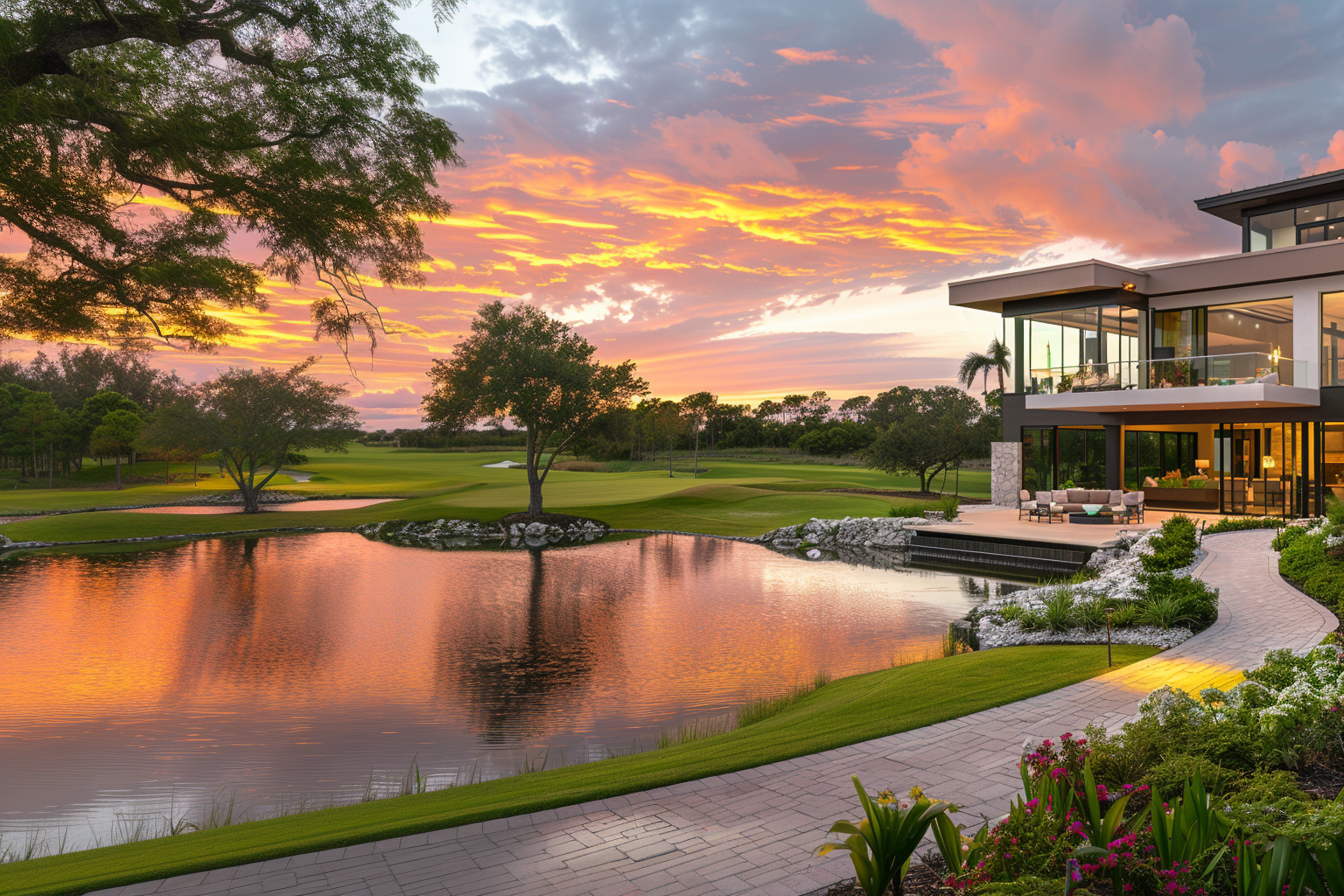Exploring why people like houses on golf courses reveals a fascinating intersection of luxury living, love for the game, and the pursuit of tranquility.
The dream of living on a golf course holds a special allure for many, encapsulating a blend of luxury, leisure, and a unique connection with nature. It’s a lifestyle choice that speaks to those who value not just the sport of golf but also the myriad of benefits that come with dwelling in such idyllic settings. From the perfectly manicured greens that stretch as far as the eye can see to the promise of a tranquil environment away from the urban sprawl, houses on golf courses represent a pinnacle of residential bliss for a diverse group of homeowners. This allure is not merely about the prestige associated with these locales but encompasses a comprehensive array of advantages including aesthetic beauty, recreational opportunities, a sense of community, privacy, and even financial investment potential.
As we delve deeper into the reasons behind the popularity of golf course living, we uncover a world where every day offers the opportunity to experience the serene beauty of nature, engage in a beloved pastime, and enjoy a lifestyle that many aspire to but few achieve. Whether it’s the tranquil mornings with views of dew-kissed fairways or the vibrant social life within the community clubhouses, living on a golf course presents a unique blend of leisure and luxury. This article aims to provide a well-rounded analysis, enriched with examples and statistics, to understand the multifaceted appeal of golf course homes
Serenity and Scenic Beauty
Houses on golf courses are synonymous with serene landscapes and scenic beauty. According to a study by the National Library of Medicine, spending time in nature can significantly reduce stress and improve mental well-being. Residing next to a golf course offers daily access to these natural benefits, with the added visual appeal of meticulously maintained greenery and expansive open spaces that embody tranquility and promote a healthier lifestyle.
Lifestyle and Leisure
The lifestyle amenities that accompany golf course living are vast and varied. Residents often enjoy access to tennis courts, walking trails, fitness centers, and on-site restaurants, reflecting a community designed for leisure and socialization. With around 15,000 golf courses across the US, as reported by the National Golf Course Owners Association, this lifestyle is both accessible and popular, offering more than just golf but a comprehensive suite of recreational activities that cater to all ages and interests.
Privacy and Exclusivity
Golf course homes often come with a heightened sense of privacy and exclusivity. Many of these communities are gated, which, according to security studies, contributes to residents feeling safer and more secure compared to non-gated neighborhoods. This exclusivity is not just about security but also about creating a secluded oasis that feels removed from the outside world, offering a unique blend of community and privacy that is highly valued among homeowners.
Investment Potential
The financial aspect of owning a home on a golf course cannot be overlooked. Properties in these locations tend to appreciate in value, sometimes at a rate exceeding the overall market average. This trend is supported by real estate market reports that highlight the enduring appeal of these homes. Additionally, the unique positioning and desirable amenities of golf course homes make them attractive rental properties, offering homeowners a potential source of income or investment growth.
Balanced Perspectives
While the advantages are significant, potential buyers should also consider the possible downsides. These might include noise from golf course maintenance and golfers, limitations on backyard use due to proximity to the course, or higher homeowners association fees to maintain the extensive amenities and landscapes.
Tailoring to the Audience
For golf enthusiasts, the appeal might lie in the direct access to golfing facilities and the community of fellow golfers. Non-golfers, on the other hand, might be more drawn to the general aesthetic appeal, the range of amenities, and the sense of community offered by these homes. Understanding the target audience is crucial in highlighting the aspects most relevant and attractive to them.
Conclusion
Homes on golf courses offer a unique blend of benefits that cater to a wide range of preferences and lifestyles. From the undeniable beauty and tranquility of their locations to the lifestyle and investment advantages they present, it’s clear why these properties are so desirable. By weighing these benefits against personal needs and preferences, potential buyers can make informed decisions about whether a golf course home is the right choice for them, ensuring that they fully enjoy the unique living experience these properties offer.

